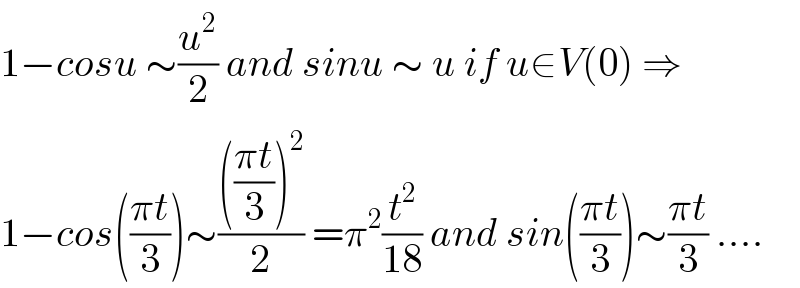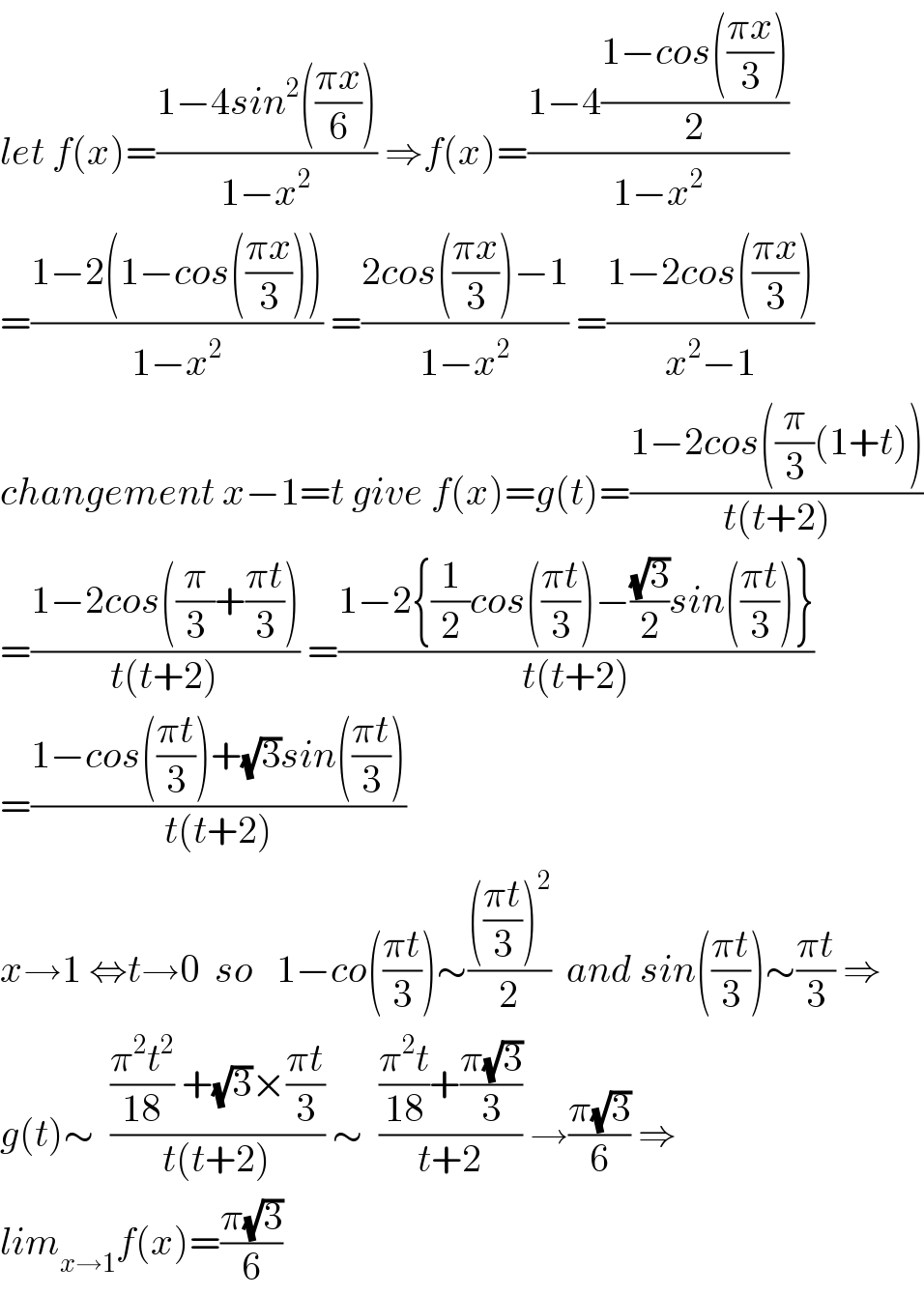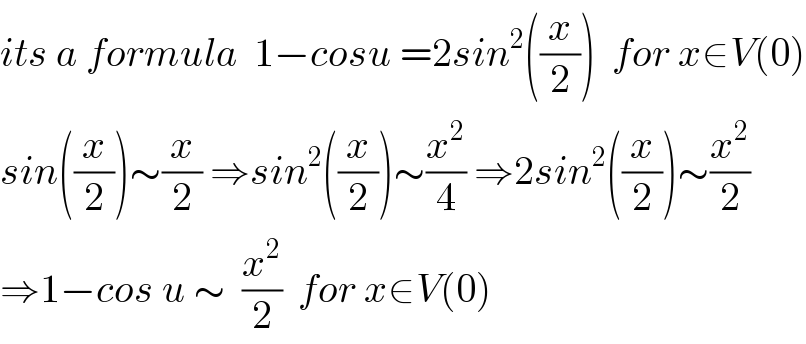
Question and Answers Forum
Question Number 70886 by Omer Alattas last updated on 09/Oct/19

Commented by mathmax by abdo last updated on 10/Oct/19

Commented by mathmax by abdo last updated on 09/Oct/19

Commented by kaivan.ahmadi last updated on 09/Oct/19

Commented by Omer Alattas last updated on 09/Oct/19

Commented by Omer Alattas last updated on 09/Oct/19

Commented by Omer Alattas last updated on 10/Oct/19

Commented by mathmax by abdo last updated on 10/Oct/19

Commented by mathmax by abdo last updated on 11/Oct/19

Commented by Omer Alattas last updated on 11/Oct/19

Commented by Omer Alattas last updated on 11/Oct/19

Commented by mathmax by abdo last updated on 11/Oct/19

Answered by Henri Boucatchou last updated on 09/Oct/19
![lim_(x→1) ((1−4sin^2 ((𝛑/6)x))/(1−x^2 )) = lim_(x→1) (((4sin^2 ((𝛑/6)1)−4sin^2 ((𝛑/6)x))/(1−x))/((1−x^2 )/(1−x))) = ((4sin^2 ((𝛑/6)x)]′_((x=1)) )/(x^2 ]′_((x=1)) )) = ((4×2(𝛑/6)sin((𝛑/6)x)cos((𝛑/6)x)]_((x=1)) )/2) =((√3)/6)](Q70890.png)
Answered by Henri Boucatchou last updated on 09/Oct/19

